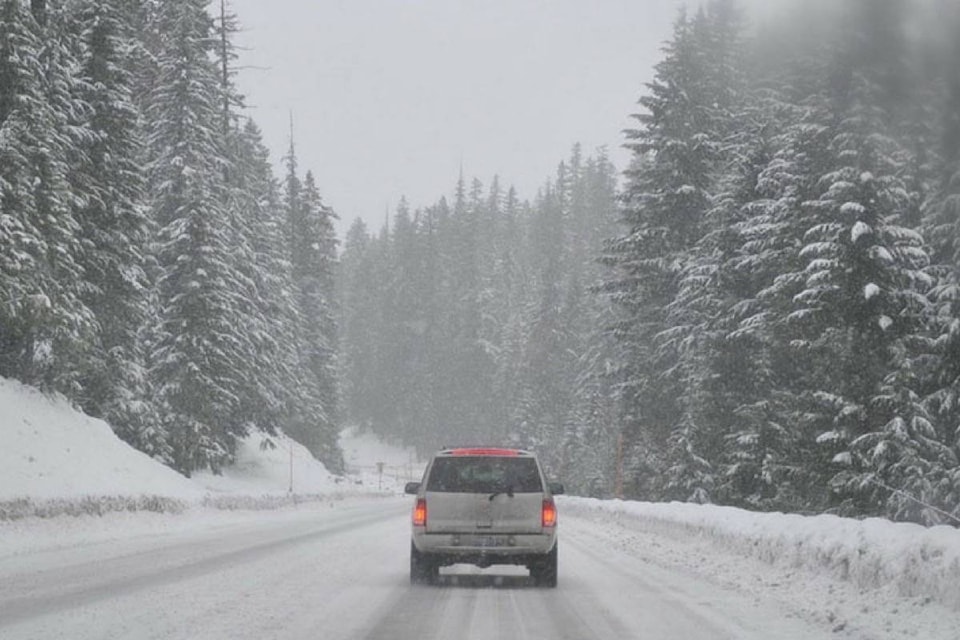ICBC and WorkSafeBC are both encouraging drivers to be careful now that fall, and changing weather conditions, are here, and winter is just around the corner.
Last winter’s extreme conditions contributed to a 10 per cent increase in motor-vehicle casualty crashes in B.C. between October and December, where driving too fast for the conditions was a contributing factor. This is an increase over the same period in 2015, when 570 casualty crashes occurred, compared to 626 in 2016.
Each year in British Columbia the number of casualty crashes due to driving too fast for conditions doubles in December compared to October. Between 2012 and 2016, an average of more than 260 casualty crashes occurred in December compared to approximately 130 in October.
For those who drive for work, October, November, and December are the most dangerous months. Almost 30 per cent of all work-related crashes resulting in injury and time-loss claims occur during these three months.
Depending on where you drive in the province, winter road conditions vary, from snow and ice in the north and on high mountain passes to the rain and fog commonly found in the Lower Mainland and southern Vancouver Island. This means that drivers need to prepare for the possibility of rapidly changing road and weather conditions, and adapt to them.
Between October 1 and March 31, most B.C. highways require passenger vehicles to have winter tires (three-peaked mountain and snowflake, or mud and snow) and commercial vehicles to carry chains.
There are other things drivers can do to stay safe on the roads in fall and winter:
Don’t go: If conditions are bad, postpone your trip if possible.
Plan your trip: If you have to travel, check road and weather conditions and select the safest route. Give yourself extra time to get to your destination to avoid rushing, and have an emergency plan if you get stuck. Check www.drivebc.ca for road and route conditions.
Prepare your vehicle: Install a set of four matched winter tires and keep an emergency kit in your vehicle. Every year, be sure to give your vehicle a pre-season maintenance check-up.
Slow down and drive to the conditions: Even the most confident and seasoned drivers are at risk in hazardous road conditions. Slow down to match road conditions and maintain a safe following distance—at least four seconds—between you and the vehicle ahead.
Remember that posted speed limits are only intended for ideal weather and conditions.
Check your tires to avoid hydroplaning: Tires with lower tread depth and low pressure are more likely to hydroplane. To prevent hydroplaning, check your tires for proper tread and inflation, scan ahead for large puddles, and reduce your speed, especially during heavy rain.
Watch for pedestrians: With shorter days and reduced visibility, be vigilant around intersections and watch for pedestrians. October marks the first month of the season where crashes involving pedestrians peak. In addition to pedestrians, be on the lookout for cyclists and other road users.
Drivers who do not have the proper winter tires on their vehicle on designated routes can be fined $121, while drivers who don’t have the minimum tread depth on their tires (3.5 mm) on the designated routes can receive a fine of $109.
“I encourage all drivers to keep themselves, and others who use the road, safe in the wintry months ahead,” says the Hon. Harry Bains, minister of labour. “Anything a driver can do to prevent an accident from occurring—whether it’s by slowing down, abiding by road signs, or being a little more present while driving—will help to keep more people safe.”
For more information about what you can do to stay safe while driving this winter, visit https://shiftintowinter.ca.
editorial@accjournal.ca
Like us on Facebook and follow us on Twitter
